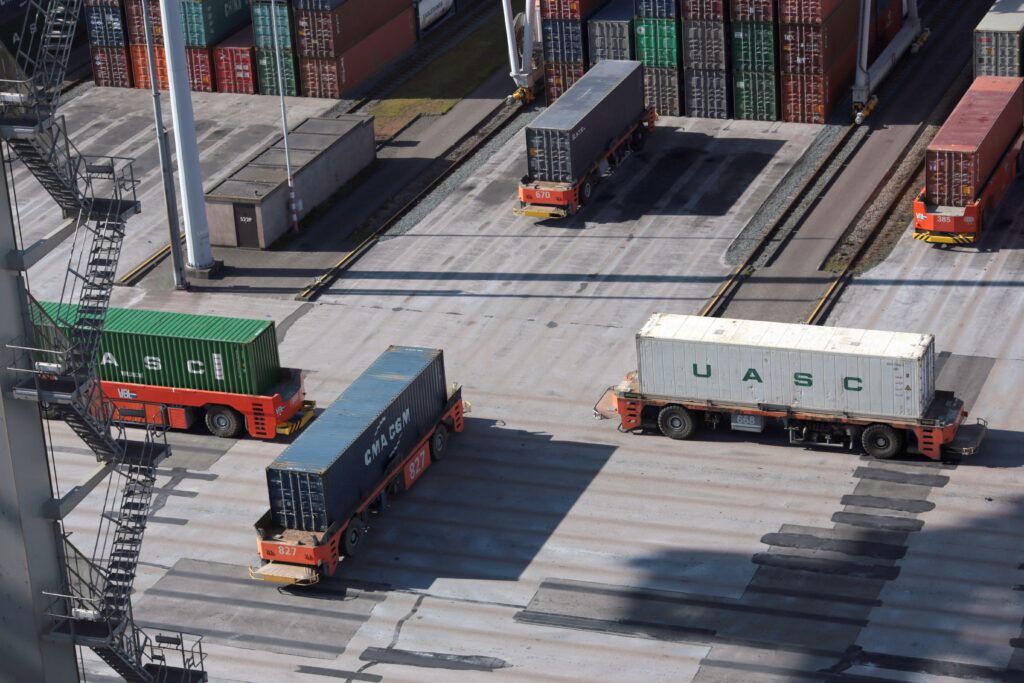Groupage has always been the cost-smart answer for shippers that don’t fill a trailer, but 2025 adds two new wrinkles: stricter pre-arrival data rules at EU borders and CO2-based tolling across key corridors. Used well, consolidation can still beat full truckload (FTL) on total landed cost and lead time reliability—provided loads are prepared for multi-touch networks and data is pushed upstream early. Below is a practical 2025 playbook grounded in current EU rules and market changes.

When groupage beats FTL in 2025
Choose groupage when you ship smaller, regular consignments that would leave an FTL under-utilised. Typical cut-offs used by European road operators position groupage as the sweet spot for about 1-6 pallets, with partial loads bridging the gap to FTL. This keeps cost per unit down and, on dense lanes with daily departures, often matches FTL reliability without paying for empty space.
A second case is risk pooling: if your weekly demand to a market fluctuates, consolidating several small orders into scheduled departures reduces the chance of last-minute truck underfill or over-commitment. Eurostat’s 2024 update shows EU road freight volumes essentially flat year-on-year, a backdrop that favours flexible capacity over fixed FTL blocks when demand is choppy.
ICS2: what changes for road and rail
From 1 April 2025, road and rail movements into or through the EU entered the final rollout of the Import Control System 2. Economic operators must lodge a complete Entry Summary Declaration (ENS) before arrival; national systems began onboarding from April with operational readiness moving toward full application from 1 September 2025.
Member States can apply temporary derogations. As of late August 2025, 15 countries signalled postponements—Austria, Belgium, Croatia, Finland, France, Hungary, Ireland, Italy, Latvia, Lithuania, Luxembourg, Poland, Romania, Slovakia and Spain—typically until end-2025. Twelve others expect ENS filings from 1 September 2025: Bulgaria, Cyprus, Czechia, Denmark, Estonia, Germany, Greece, Malta, Netherlands, Portugal, Slovenia and Sweden. If your truck enters via a “no-derogation” external border for example, Bulgaria or Greece plan for strict ENS readiness from 1 September.
Who lodges the ENS? By default, the carrier entering the EU files; however, forwarders issuing transport documents and, in specific cases, EU-based consignees may submit parts of the dataset in multi-filing. A complete ENS must include plain-language goods descriptions, at least a six-digit HS code per item, and full shipper/consignee address details. Expect pre-arrival risk referrals requesting clarifications; these must be answered before assessment can complete.
CO2-based tolls reshape route choice
CO2 class pricing is spreading. Germany added a CO2 component to MAUT on 1 December 2023, calculated on €200 per tonne of CO2 and materially lifting per-kilometre costs for diesel tractors. Austria incorporated CO2 into GO-toll from 1 January 2024, and the Czech Republic added a CO2 component on 1 March 2024. In 2025 the Netherlands reworked Eurovignette fees with five CO2 classes—diesel trucks in class 1 face higher tariffs, while low- and zero-emission vehicles gain reductions. For pan-European routings, Switzerland also increased HGV toll rates by 5% from 1 January 2025.
What this means operationally: on lanes where you can fill trailers consistently with low-emission vehicles, FTL can recover time and money. But on mixed-fuel fleets or low/variable volumes, groupage helps you buy only the space you need while avoiding the steepest CO2-class surcharges. Compare not only distance but also border choice—entering the EU via a Member State already enforcing ICS2 may trigger data-driven holds if your upstream data is thin.
Palletization that survives the hub
Groupage networks involve cross-dock touches, so load stability is non-negotiable. Align your packaging to recognised European practices:
- Keep goods within the pallet footprint—prefer the 800 × 1200 mm Euro pallet to fit racking and trailers, reducing edge impacts.
- Build stable, uniform layers; avoid overhang and maintain a low centre of gravity. Use corner boards and top-sheets to spread compression.
- Validate wrap patterns against stability guidance inspired by EUMOS standards; target enough containment force to withstand horizontal accelerations in transport. Where possible, test new skus or seasonal packs under dynamic conditions, not just static wrap force.
Following these basics reduces handling damage and the rework that blows up groupage transit plans.
Data upstream: avoid holds and rejections
Border friction in 2025 is mostly preventable. A simple upstream checklist will keep your consolidated trailers moving:
- Capture the HS6 and a specific, plain-language description at the point of order—not at the dock. Ban generic terms like “parts,” “samples” or “FOAK”; they trigger referrals.
- Collect complete shipper and consignee details, including postal codes and a contact email/phone, and the consignee’s EORI where applicable.
- Allocate filing roles with your cross-border carrier/partner in writing—single filing or multi-filing—and ensure the filer can respond to pre-arrival risk referrals before the truck reaches the border.
- For multimodal legs e.g., unaccompanied trailers by sea, align timelines so ENS lodgement precedes the EU arrival of the unit, not just the tractor.
Get these right and groupage can be both fast and compliant in 2025: scheduled departures give you day-definite reliability, pallet discipline preserves product, and clean data keeps your goods off the inspection bay—and on the road.
